
Cherrythroated Tanager (Nemosia rourei) Caetes Forest, Es… Flickr
Hooded Tanager Nemosia pileata and Rufous-headed Tanager Hemithraupis ruficapilla, and that a hybrid origin for this individual would indicate the possibil-ity that the type specimen and the eight birds seen by Sick in 1941 also were hybrids. Scott (1997) was not the first to suggest that the Cherry-throated Tanager could be a hybrid.

Cherrythroated Tanager in September 2016 by Gabriel Bonfa · iNaturalist
Cherry-throated Tanager: English (United States) Cherry-throated Tanager: French: Tangara rougegorge: French (France) Tangara rougegorge: German: Rubinkehltangare: Japanese: バラノドズキンフウキンチョウ: Norwegian: rubinstrupetanagar: Polish: polańczyk rubinowy: Portuguese (Brazil) saíra-apunhalada: Portuguese (Portugal) Saíra.
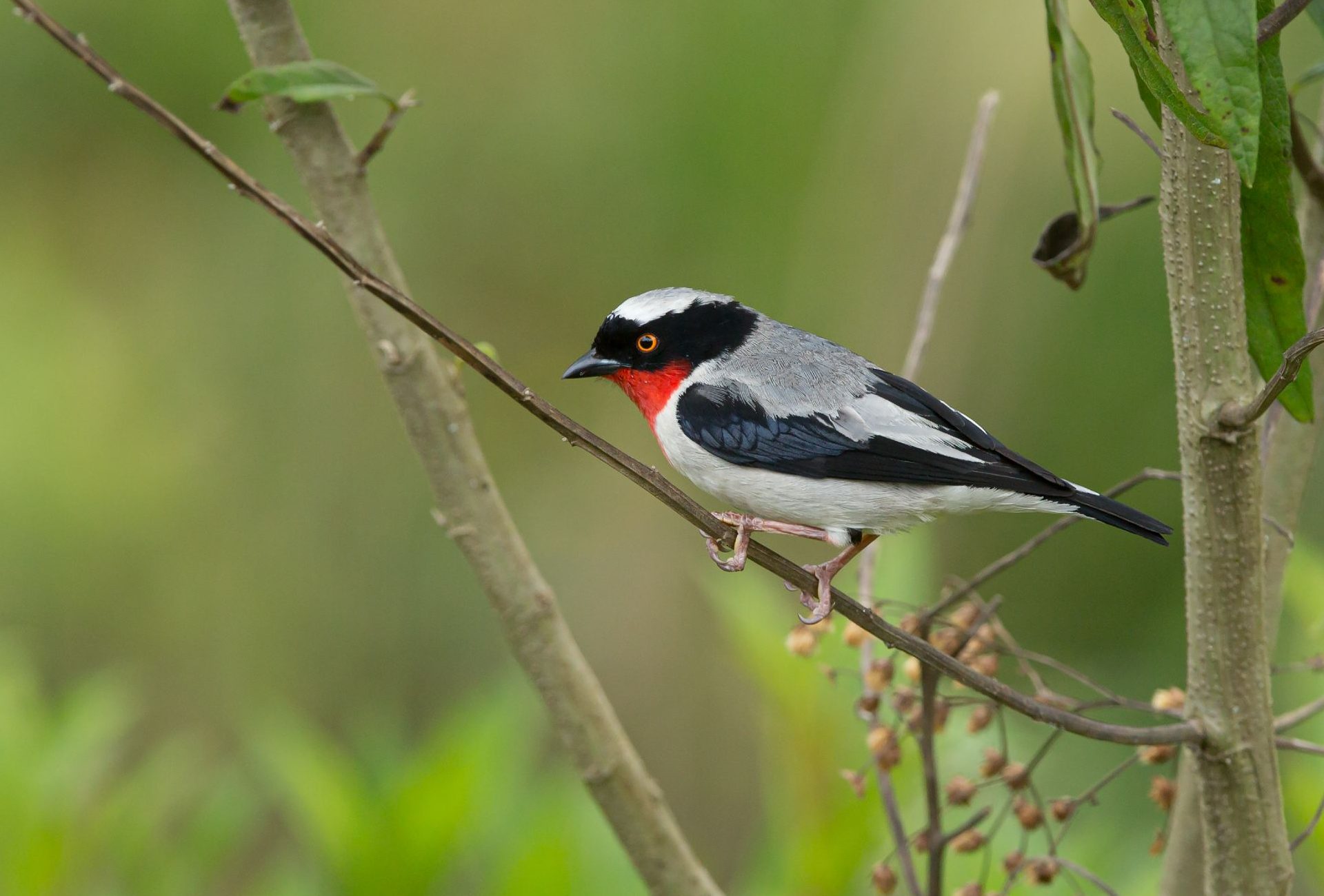
The Last Stand for the Cherrythroated Tanager Rainforest Trust
Striking, fairly small tanager with a black-and-gray back and white underparts contrasting with a bright red throat. Note the yellow eyes. Inhabits the canopy of humid forest, where it forages in bromeliads and usually accompanies mixed-species flocks. Has a sharp nasal call: "péuuu, péuuu-see'ee." Extremely rare, known from only a few forest patches.

Cherrythroated Tanager eBird
The Cherry-throated Tanager, Nemosia rourei, is a medium-sized passerine bird. This critically endangered tanager is an endemic to handful of localities in the Atlantic Forest in Espírito Santo, Brazil, though the possibility that it occurs in adjacent parts of Minas Gerais and Rio de Janeiro cannot be discounted. It has a striking, essentially black-white-red plumage; a photo is online in.

Cherrythroated Tanager, or Saíraapunhalada (Nemosia rourei) Fotografias de aves, Pássaros
The Cherry-throated Tanager had only been seen once after its discovery in 1870 and was believed to be extinct until 1998, when a small population was rediscovered in the Brazilian Atlantic Forest. The bird spends the majority of its life high in the rainforest canopy, searching for insects among the branches.

Cherrythroated Tanager YouTube
The cherry-throated tanager (Nemosia rourei) is a medium-sized passerine bird. This critically endangered tanager is an endemic to handful of localities in the Atlantic Forest in Espírito Santo, Brazil, though the possibility that it occurs in adjacent parts of Minas Gerais and Rio de Janeiro cannot be discounted. It has a striking, essentially black-white-red plumage; a photo is online in.

Cherrythroated Tanager eBird
Cherry-throated Tanager range map by ABC. The Cherry-throated Tanager is known as saira-apunhalada ("stabbed tanager") in Portuguese due to its vivid red throat. This species was first described in 1870 from a single specimen, not seen again until 1941, then rediscovered once more in 1998. "When Brazilians talk about the five most.
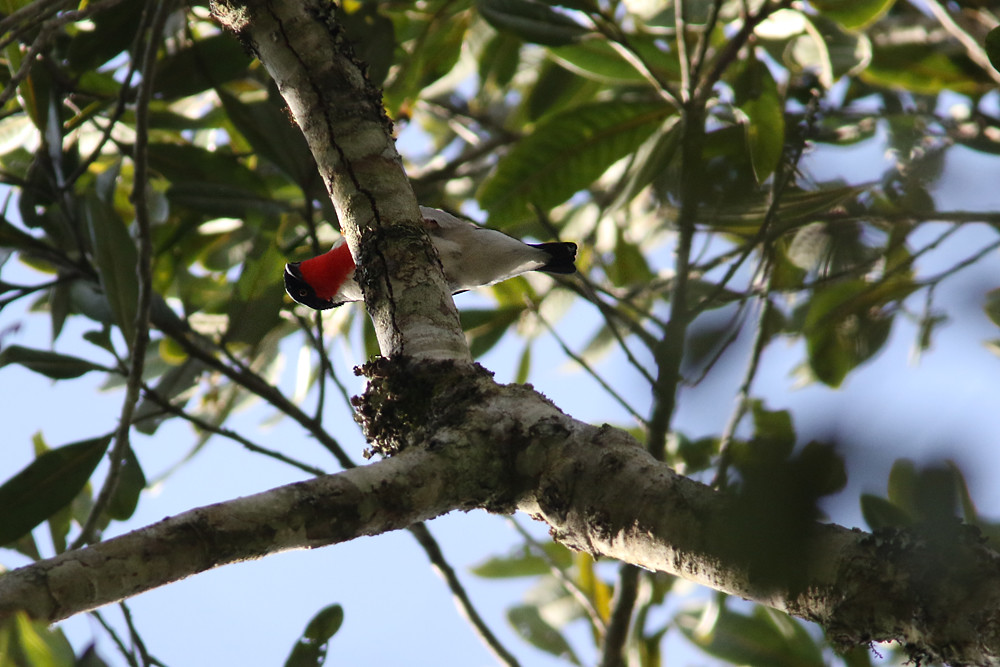
Cherrythroated Tanager (Nemosia rourei) Caetes Forest, Es… Flickr
The cherry-throated tanager is a medium-sized passerine bird. This critically endangered tanager is an endemic to handful of localities in the Atlantic Forest in Espírito Santo, Brazil, though the possibility that it occurs in adjacent parts of Minas Gerais and Rio de Janeiro cannot be discounted.

Timeline Photos Neotropical Birds Online Facebook Bird species, Bird photo, Beautiful birds
We report the rediscovery of the Cherry-throated Tanager Nemosia rourei in southern Espírito Santo, Brazil, in February 1998, and the first substantive observations of its behaviour, vocalizations and other aspects of its natural history. Approximately 10 individuals, occasionally in groups of up to five birds, were located in humid montane forest at 1,100 m a.s.l. at the privately owned.
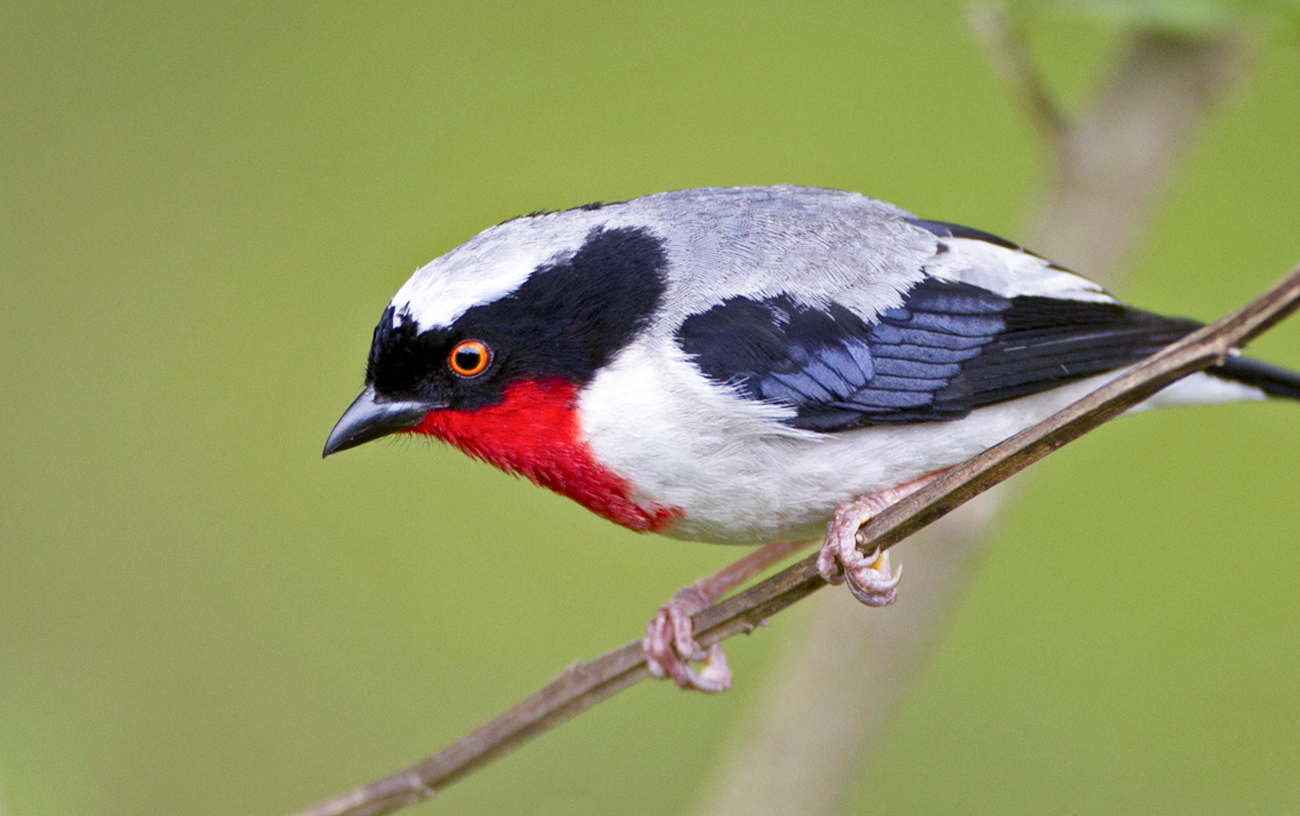
A Splash of Hope Cherrythroated Tanager Gets New Protected Area in Bid to Dodge Extinction
population of Cherry-throated Tanager Nemosia rourei, only the second currently known for the species. Cherry-throated Tanager is endemic to a tiny area of south-east Brazil and is considered Critically Endangered globally6,7. The species was described in 1870, on the basis of a specimen reputedly collected at Muriaé, in Minas Gerais, and

Cherrythroated Tanager eBird
The cherry-throated tanager (Nemosia rourei) is a medium-sized passerine bird. This critically endangered tanager is an endemic to handful of localities in the Atlantic Forest in Espírito Santo, Brazil, though the possibility that it occurs in adjacent parts of Minas Gerais and Rio de Janeiro cannot be discounted.

Cherry Throated Tanager(Nemosia rourei) a photo on Flickriver
The Cherry-throated Tanager spends the majority of its life high in the rainforest canopy, searching for bugs among the branches. But rampant agricultural conversion has forced the species to live in highly fragmented habitat that also faces expanding urban encroachment. Conservationists estimate that only 10-20 individual birds remain.
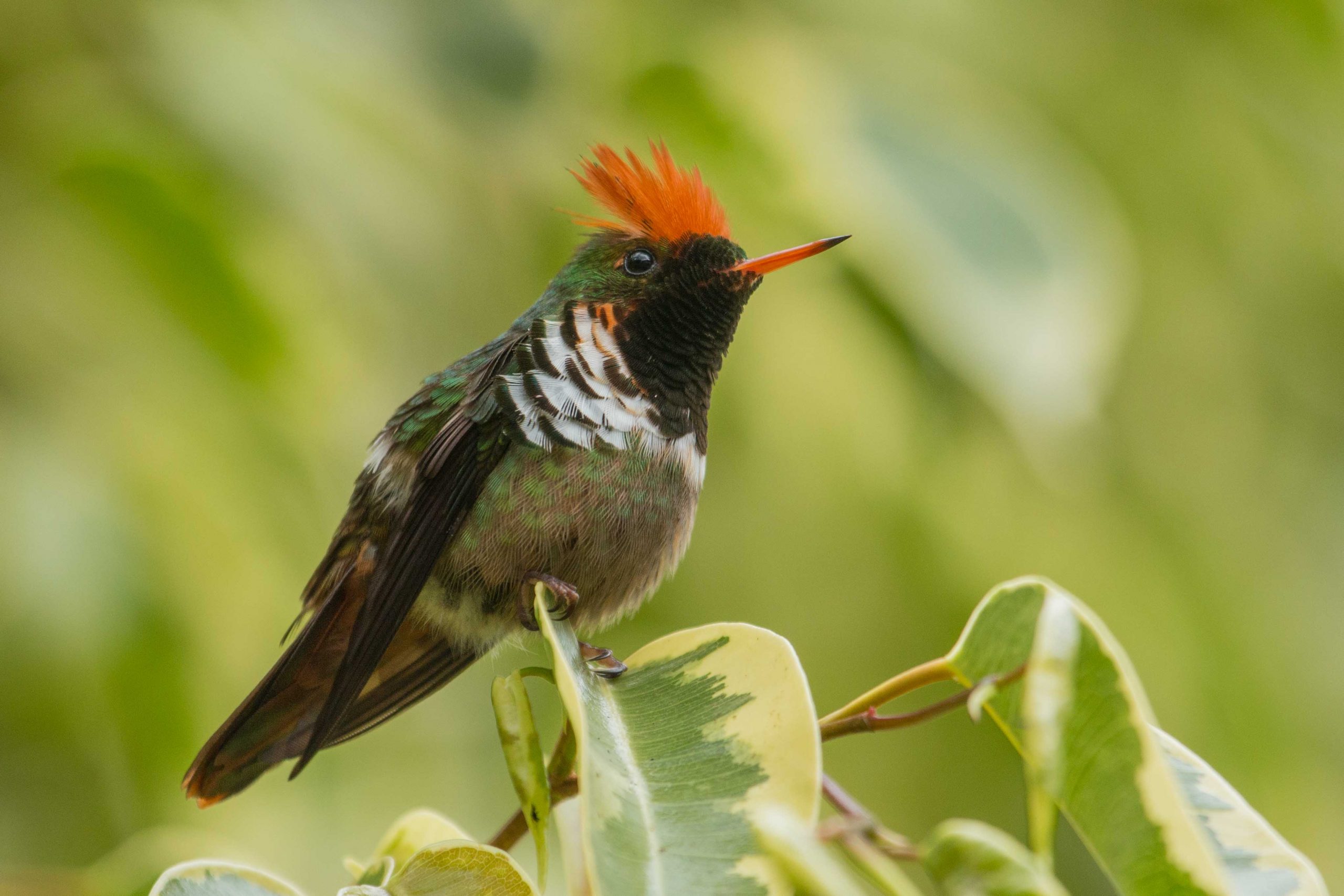
Land of the Cherrythroated Tanager Agami Nature Tours
Migratory status: not a migrant: Forest dependency: high: Land-mass type: Land-mass type - continent: Average mass-
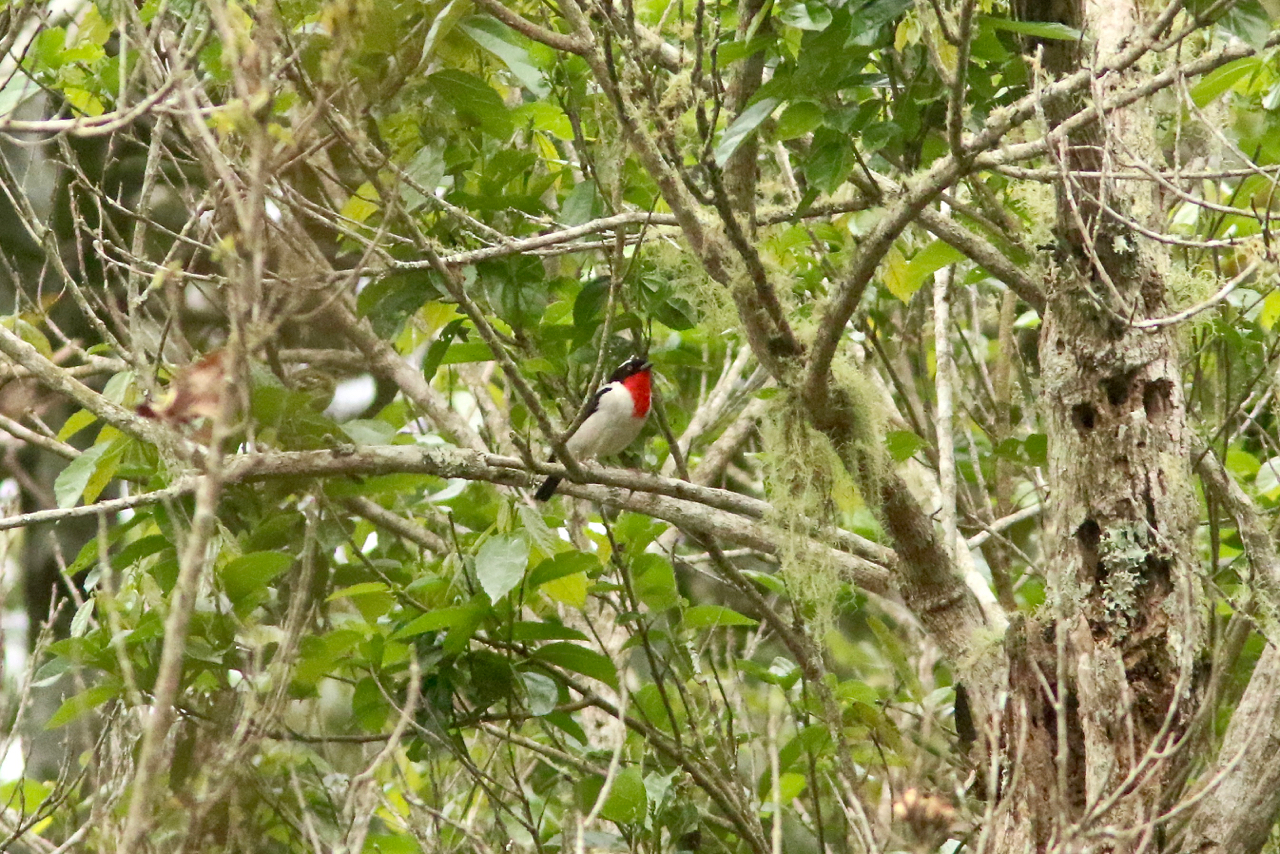
Cherrythroated Tanager Dutch Birding
This species qualifies as Critically Endangered owing to its extremely small population in a single area. Populations may occur in other areas, but these are likely to be small and declining. BirdLife Species Guardian: SAVE Brasil. Population size: 30-200. Population trend: Decreasing. Extent of occurrence (breeding/resident): 2,200 km 2.
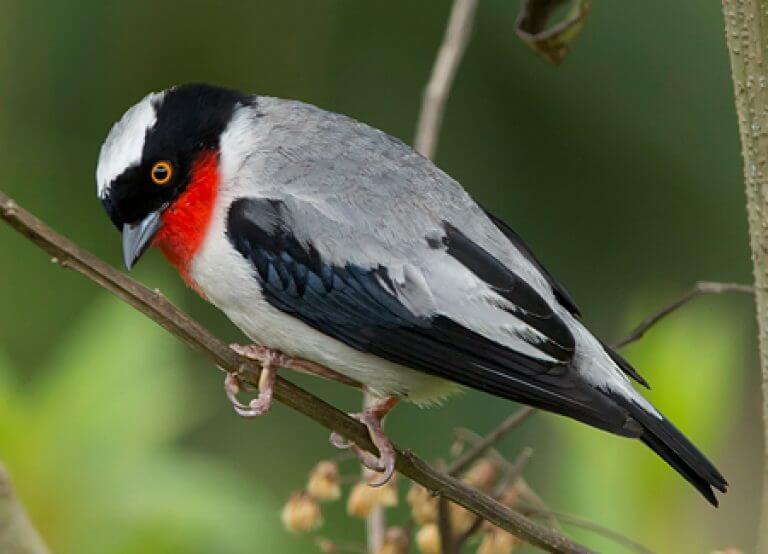
Cherrythroated Tanager American Bird Conservancy
The Cherry-throated Tanager had only been seen once after its discovery in 1870 and was believed to be extinct until 1998, when a small population was rediscovered in the Brazilian Atlantic Forest. The bird spends the majority of its life high in the rainforest canopy, searching for insects among the branches.
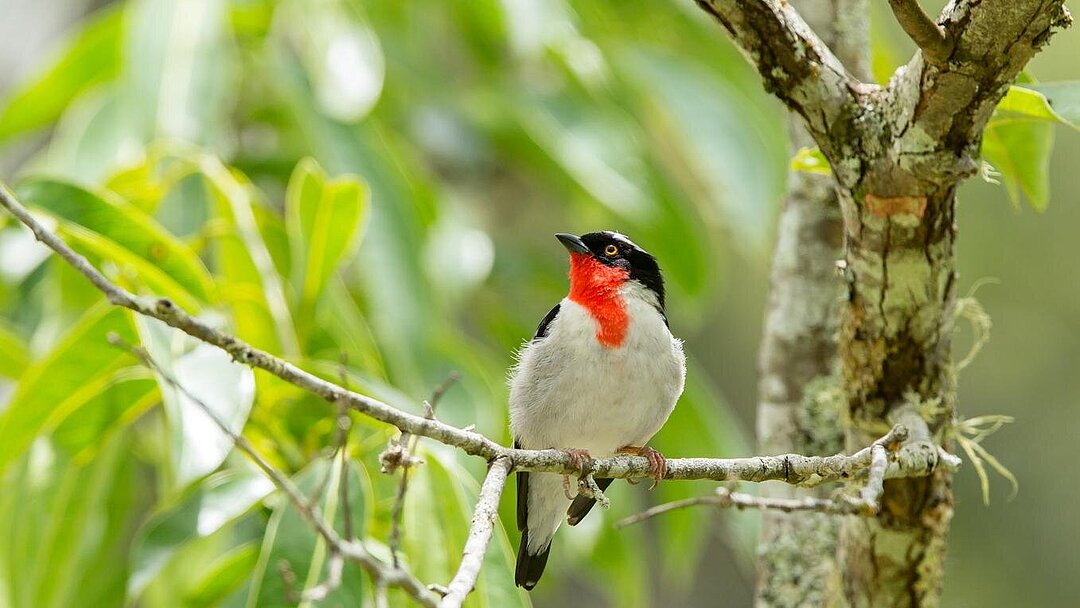
Hellabrunn Zoo supports species conservation project for cherrythroated tanagers in Brazil
Birds forage in the interior of the crowns of tall trees, occasionally lower towards the forest edge (Bauer et al. 2000), and appear to favour moss and lichen-encrusted branches (Bauer et al. 2000). Between one and ten individuals are typically found together. It is associated with mixed-species flocks, having been recorded with over 30.